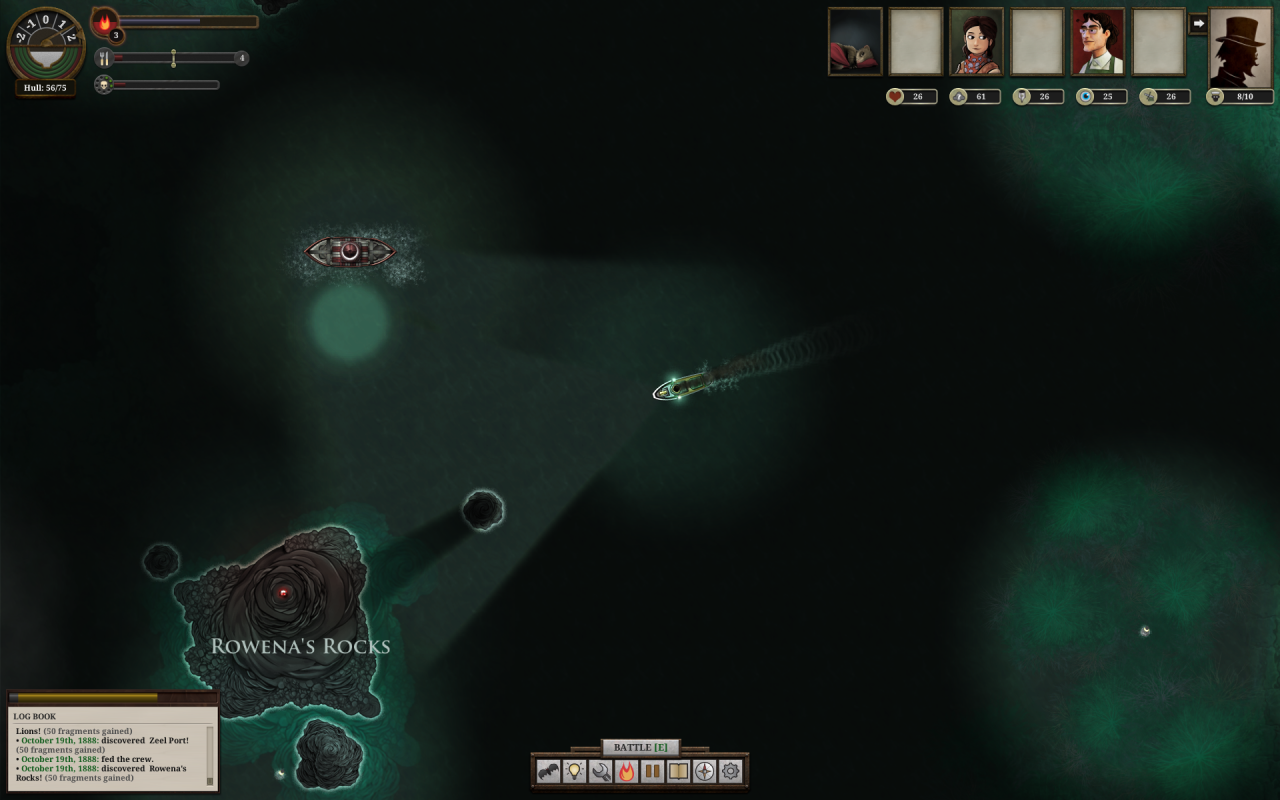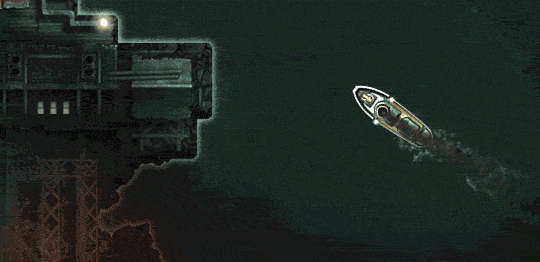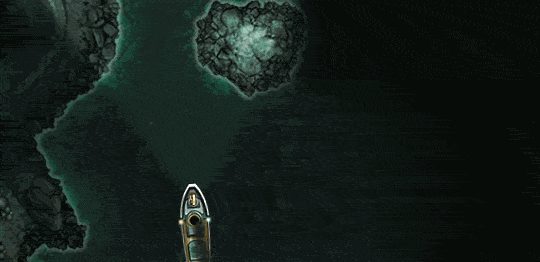


Sunless Sea (2015)
Sail the dark apocyanic waves as you explore the Sunless Sea! Drawing on the traditions of exploration games since the days of Seven Cities of Gold, Failbetter Games’ Sunless Sea turns you loose on an underground ocean, populated procedurally.
The map generation is made up of shuffled tiles, large chunks of sea and rock that are distributed according to the rules. While the West coast of the map is mostly fixed, as you get deeper and deeper into the unknown what you will find there becomes more and more uncertain.
It might at first superficially remind you of Elite or Pirates, but this isn’t really a trading game. Instead of swapping commodities, you’re exploring stories. This gives an additional dimension to the game: now it matters not just where you are in space, or in time, but also where you’ve been before. Visit the same islands in a different order, and you might have a very different experience.
Traditionally, one of the weaknesses of strongly-curated interactive narrative is that the structure can be so predictable that playing through a second time gets stale. Failbetter Games’ earlier game Fallen London addresses that by mediating the available story-bits via cards and changing qualities, but it is still mostly transparent in its operation. Sunless Sea takes some of the strengths of that approach and uses the procedural generation to keep the stories aggressively fresh: you know how things played out last time, but you can’t quite be sure that you’ll even be able to find the same choices.
Eventually, you’ll still see most of the content, but again, the procedural nature of the game means that it’s easy to sneak in surprises. In interviews, the developers have talked about how the procedural nature of the game enables them to add secrets, explicitly mentioning Elite’s rock hermits.
